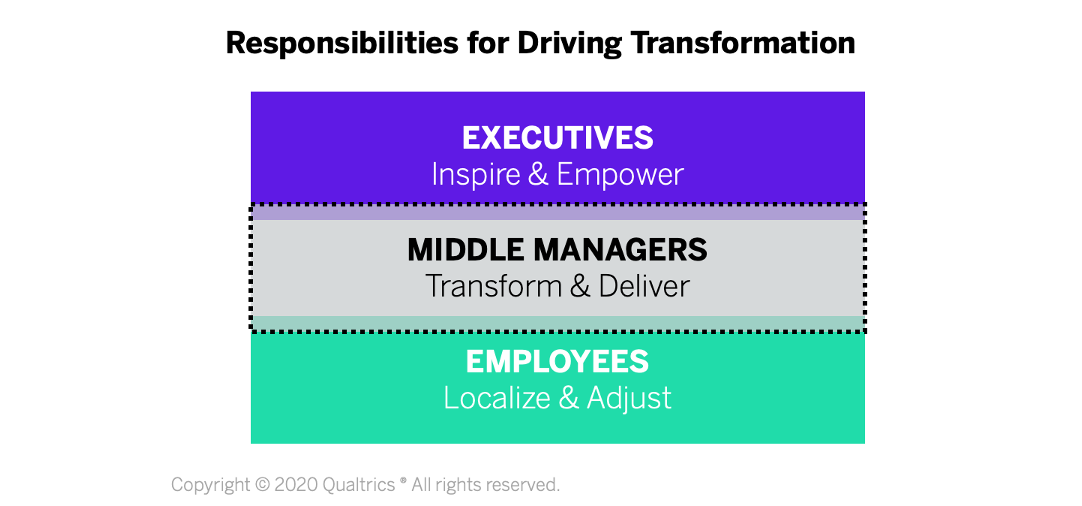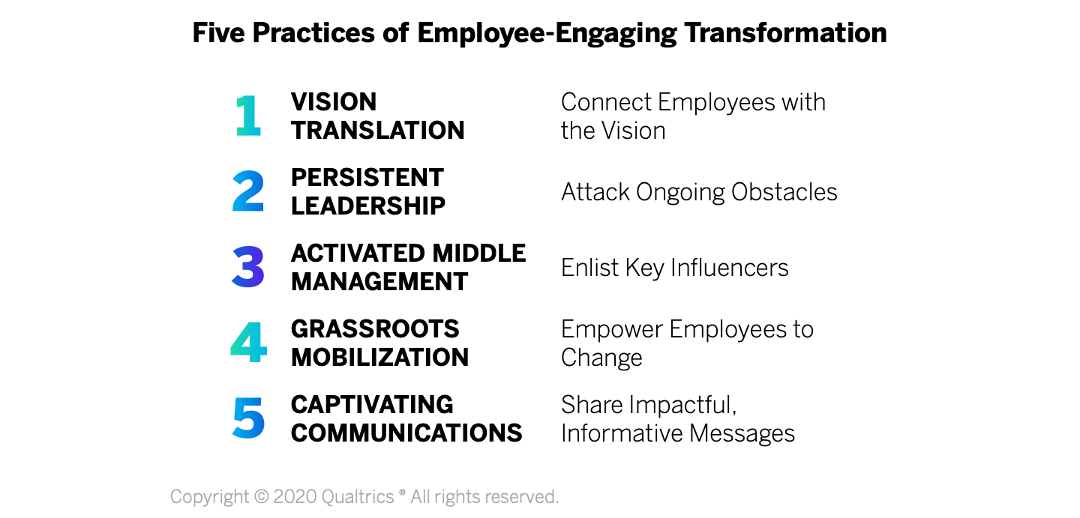Let’s face it, change isn’t easy. As John Kenneth Galbraith so aptly stated:
“Faced with the choice between changing one’s mind and proving that there is no
need to do so, almost everyone gets busy on the proof.”
That’s probably why I get so many inquiries about how to drive experience management (XM) transformation across large organizations. Here’s a typical question: should we drive change top-down driven by the executive team or should it be a more organic bottom-up activity?
My answer is “yes.” Successful change efforts combine both top-down direction and bottom-up engagement. There’s also a third factor in the equation, middle managers. I can’t tell you how many times I’ve heard people complain about how middle managers are stalling their change efforts.
I don’t think of middle managers as obstacles. They’re a critical group of people who ensure that your organization doesn’t lose its direction over time… and that you thoughtfully drive change when needed. That role of being stewards of an organization’s direction is what often makes middle managers appear to be holding back transformational programs. Their apparent reluctance often comes from balancing the dual responsibilities of transforming for the future while delivering for the quarter.
Rather than viewing middle managers as an issue, you need to embrace them as a critical component of the transformation. If you can get them on-board, then you will have a much higher likelihood of achieving and sustaining your desired changes.
Here’s my mental model for how to drive transformation:

- Executives: Inspire & Empower. Senior leaders need to provide the vision and motivation for the change to the rest of the organization. This means inspiring employees about the opportunities and empowering them to actually make changes. But they can’t go so far as to prescribe specific behavior changes, as those will be different across the organization. What should be on executives’ agenda? Five A’s: Aspire, Assemble, Advance, Accelerate, and Ascend.
- Employees: Localize & Adjust. Across a large organization, there are many different people with many different roles across many different regions. Instead of the entire workforce making the exact same changes, each group of employees need to localize their leaders’ vision and make relevant adjustments in how they operate. Check out the launchpad, Activating Employees Around Experience Management.
- Middle Managers: Transform & Deliver. Building the connection between top-down directions and bottom-up adjustments falls upon a layer of leaders who have to balance making transformational changes while still delivering on the near-term goals of the business. These middle managers are the ones who are on the hook to encourage and coach their organizations towards new behaviors, while also ensuring that they achieve short-term goals. To embrace these key stakeholders, take a look at the report, Activating Middle Managers to Drive CX Change (this is an older report, but it’s still very relevant).
As you develop your change agenda, I also recommend reading another one of our “well-aged” pieces of research, Introducing Employee Engaging Transformation (EET). As you can see in the chart below, the five practices of EET cover many of the key activities I’ve mentioned.

Across all of your efforts to drive change, you need to think about specific techniques for altering people’s behaviors. We have a great report for that topic as well, The XM Diffusion Cycle. It discusses three phases of achieving those shifts: Infusion, Absorption, and Recalibration.
The bottom line: To drive change, activate middle managers.
Bruce Temkin, CCXP, is the Head of the Qualtrics XM Institute





